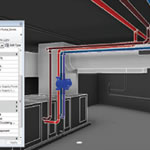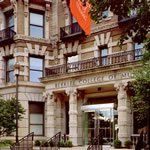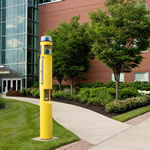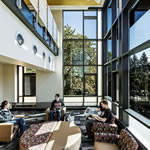
Using floors as a way-finding method.

Articles about improving school restrooms too often miss one big point.

Something called Building Information Modeling offers a new and better way to manage maintenance.

Finding the best solution for securing college and university doors is a challenge for security professionals.

How do architects and designers know that they're creating schools with interiors that positively affect student performance?

A sensible balance must be found when deciding how to renovate and repurpose historic campus structures to meet todays programming needs.

Will giving students permission to carry guns on campus make college life safer? Opinions differ.

Here's how two campuses are satisfying administrators by saving money and satisfying students by increasing sustainability in their restroom and locker room renovations.

More college and universities are finding success in using campus teams to manage troubled students.

Leveraging Disney's organizational behavior for emergency management at colleges and universities.

There may be help from afar.

A trend in residence hall design, amenities, decor and furnishings is transforming dormitories into fashionable, stylish living spaces.

Hygiene and vandalism resistance rank as key concerns in today’s more collaborative K-12 restroom and locker room designs.

Turning a 60-year-old high school into a 21st-Century learning environment.

Crime Prevention Through Environmental Design offers design choices that can enhance safety and security.
Technology is modernizing the traditional instructional environment. The modern college student arrives on campus with more than just a suitcase in tow. An array of gadgets will also be on hand, including a tablet computer, a smartphone, an MP3 player, perhaps a laptop.

How flipping classrooms will alter classroom design, furnishings and technology to help students learn more.

Strong opinions aside, the truth is that many school districts outsource one or more services, and for reasons that include financial savings, as well as enhancing organizational flexibility, economies of scale, risk avoidance and access to capital invest

Collaborative learning involves teamwork, as does the designing of environments in which collaborative learning can thrive. Educational facility design experts know what works - and what doesn't - when it comes to creating collaborative spaces that allow for multiple uses and accommodate multiple learning styles. When creating collaborative spaces, keep the following in mind.

As with other campus spaces, fostering collaboration is a decisive influence in the design and function of todays campus libraries.